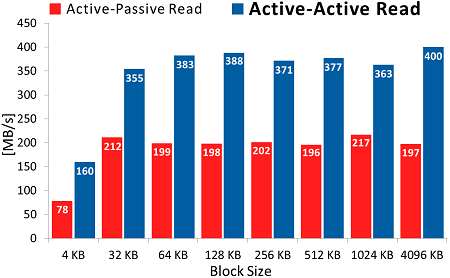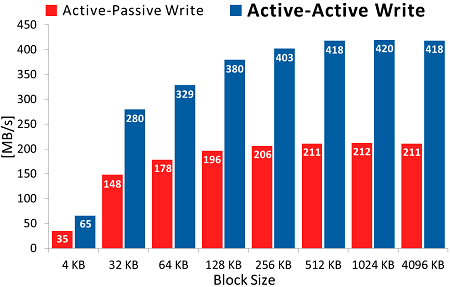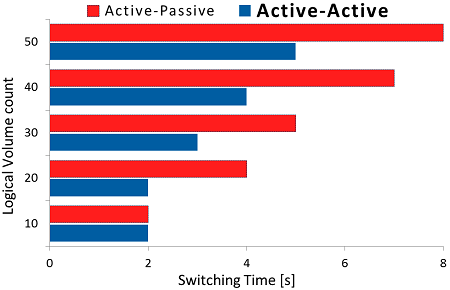Achieve High Performance in a High Availability Environment with Open-E DSS V7
OPEN-E DSS V7
END OF LIFE
For:
Open-E DSS V7
Downtime = Troubles
When it comes to storage systems, in today’s competitive market, industries expect trustworthy solutions which will ensure safety of their business in case of any disaster.
Even short periods of downtime in the storage infrastructure will cost company’s money, reputation and can get into possible legal repercussions. Moreover, in some industry sectors, there are new regulations in place that persuade enterprises to follow specific HA requirements.
Highly available and… more efficient?

High Availability clusters are built of a redundant hardware - typical setup is a two-node cluster in an automatic failover configuration. An example of interface protocol which can be used for this purpose is iSCSI.
Using the same storage resources, you can improve their overall performance by applying specific configuration of cluster nodes – e.g. Active-Active or Active-Passive setups.
The main difference between them is the way they process workload and utilize available storage resources. In Active-Active setup, all resources are in use - handling I/O traffic. With Active-Passive setup however, part of storage resources is in a standby mode – only being operational when disruption takes place.
Versatile Solution

Open-E DSS V7 with Active-Active iSCSI Failover Feature Pack perfectly matches the expectations for both highly available and well performing storage solution.
As for meeting the High Availability standards, in Active-Active configuration, volumes run simultaneously on two nodes and thanks to automatic failover, even if one node fails, all application services continue to run without interruption.
Utilizing all available storage resources in that setup has another advantage – it significantly improves overall performance of the system.
The tests performed with Iometer proved that in comparison with iSCSI Active-Passive configuration, iSCSI Active-Active setup delivers up to 2 times better read and write performance and better I/O capability.
As for failover performance, we can characterize it by measuring time needed to switch resources during failover. Tests involving different number of logical volumes proved that in iSCSI Active-Active Failover configuration, that time was generally shorter than in Active-Passive solution.

To summarize, Open-E DSS V7 with iSCSI Active-Active Feature Pack is a perfect solution for companies that lay stress on high availability of their storage resources and expect from their systems to deliver even better overall performance.
We can strongly recommend it for:
- Business Continuity,
- High Availability,
- Cloud Storage,
- Storage for Virtualization,
- and many more...
iSCSI Active-Active Failover on our website
How to configure Active-Active iSCSI Failover with Open-E DSS V7:
Test comparison of iSCSI Active-Active Failover and iSCSI Active-Passive Failover using Open-E DSS V7 (White Paper):
Webinars:
- Open-E DSS V7 Active/Active Setup
- Open-E DSS V7 Active/Active iSCSI Failover QUICK START
- HA Solution with VMware and Open-E DSS V7 as Virtual Storage Appliance
- Active-Active HA Cluster Solution: Double Performance with Zero-Single-Point-of–Failure setup
- Upgrading to Open-E DSS V7 with Open-E DSS V6 iSCSI Auto Failover working
- Active-Passive and Active-Active HA Cluster Comparison with Performance Benchmark


